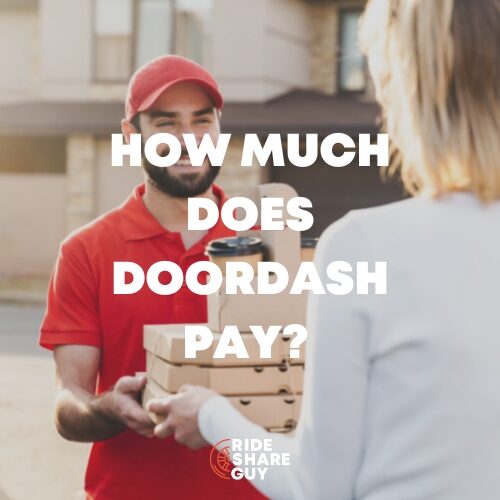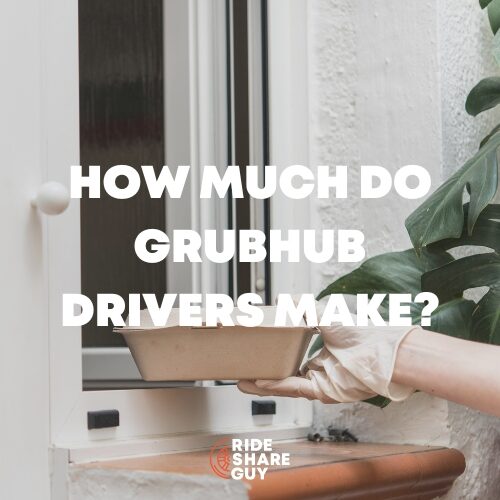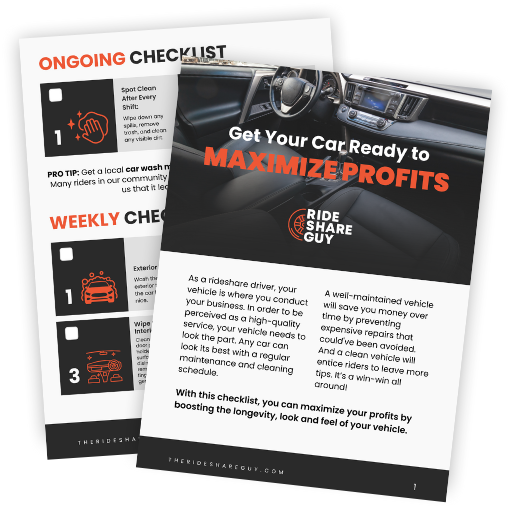How drivers (including delivery) are rated is a sore point among drivers. Basically, anything less than a 5 can eventually lead to driver deactivation – even though a 4 might be considered good! RSG contributor Dash Bridges covers how delivery ratings work for DoorDashers and how they could be improved, both on the pickup and delivery side.
I never signed up for Uber/Lyft. My Prius C is too small and too unkempt to comfortably drive strangers around town. Also, the Chow Mein & Beef with Snow Peas plate doesn’t silently judge me when I’m taking it to its destination. So I stick with food delivery.
However, I am aware that driver ratings are a serious part of their business. It’s a frequent topic in Facebook groups and message board conversations. On a 1-5 rating scale, if you’re averaging below 4.6, you risk deactivation.
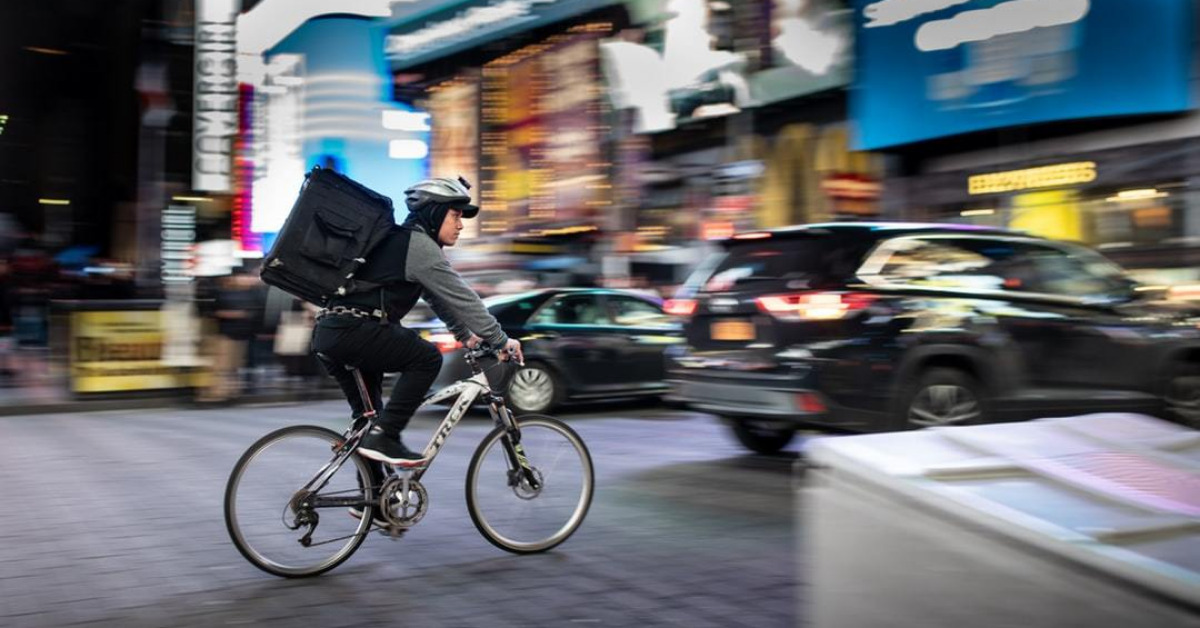
Gig economy platforms have a tendency to mimic one another, so it’s no surprise that Instacart and DoorDash and the best food delivery jobs have similar 1-5 star rating systems. Postmates had a 1-5 star scale until recently, when they moved to a thumbs up-thumbs down rating.
The DoorDash Rating System
Here are a few specifics to the DoorDash rating system:
- 1-5 scale (5 being best)
- Average of your most recent 100 ratings
- Ratings under 4.2 subject to deactivation
- No direct feedback received
If you Dash, you have your own score, which looks like this:
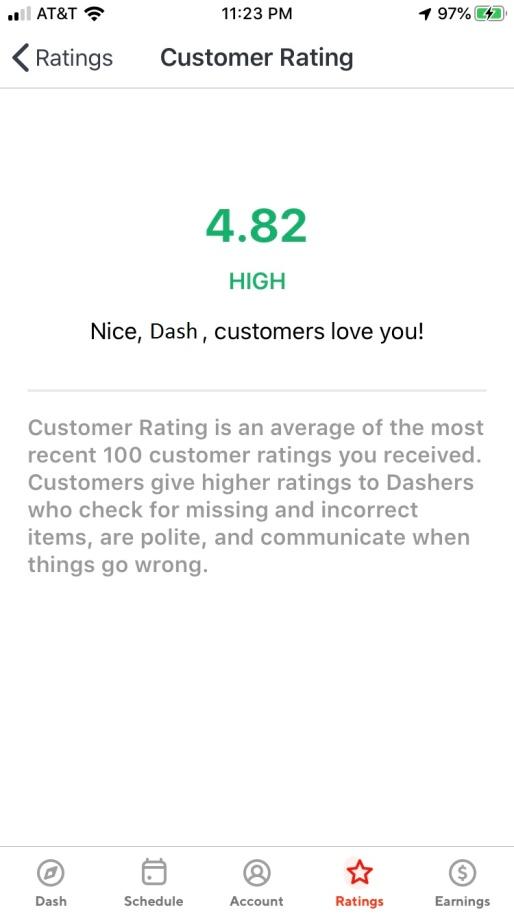
1-5 star rating systems aren’t unique to the gig economy. You’ve seen Ziosks at Chili’s or similar restaurants. These machines let you play trivia before ordering and allow you to pay without waiting for your server. They also provide an opportunity to rate a variety of different aspects of your experience, including your server.
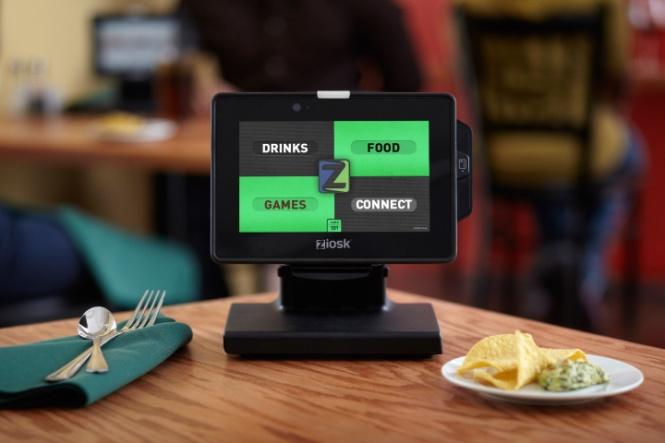
This article describes a nightmare for servers, where tablet averages below a perfect five are considered problematic. Even though these ratings are highly subjective and often not taken seriously by customers, they could lead to decreased shifts or termination, causing anxiety among wait staff. Furthermore, they’re subject to outright and subtle discrimination from patrons who grade (even subconsciously) based on gender, race, sexual orientation and other characteristics. Even if shift and store managers consider them into proper context, managers and directors up the chain of command can rely on them as an easy metric to track.
When Your A-minus Is an F
We’re operating in systems where 4.6, 4.2 or ‘anything below’ a perfect 5 threatens your job. Looking at it another way, if you got 46/50 on a test, wouldn’t you be stoked? That’s 92%, an A-! 42/50 is 84%, a solid B. The stratospheric expectations for these scores can encourage lobbying strictly for the benefit of the rating, i.e. “If you liked the service, be sure to rate us 5-stars!” These persuasions lead to a phenomenon called Goodhart’s Law, “When a measure becomes a target, it ceases to be a good measure”.
I rarely use DoorDash myself, but I made an exception for this article to test the rating system. (Note: Can I expense this?). I went through the process and received my food.
My delivery was…fine. My order arrived in a reasonable amount of time. My Dasher didn’t have my pizza in a warming bag, although the box was warm when he handed it to me. His personal presentation was slovenly. He also didn’t pause his ongoing phone conversation when handing me the food. No harm done, but he had room for improvement.
With these observations fresh in my mind, I was ready to provide feedback. And I got this:
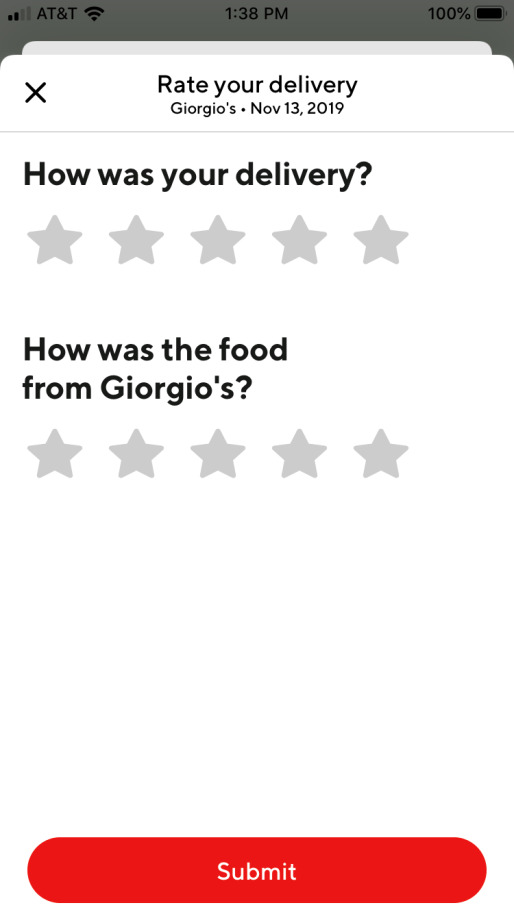
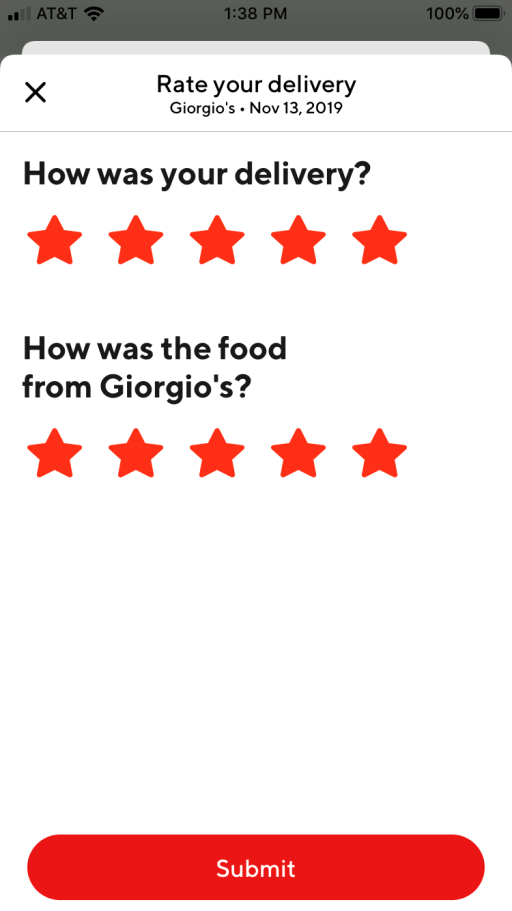
Not exactly a penetrating examination of your customer experience!
If I gave him 4 stars, that’s a path to certain deactivation! Knowing what I know, unless the service is dreadful, I don’t have a choice but to rate five stars. How is this a good system?
As the self-described Dasher Who Tries to See Both Sides Of It, I completely understand gig economy companies’ needs for a simple, universal way to measure Dasher competence. Drivers/Dashers are spread out to all corners of the continent and it’s impossible to keep an eye on everyone. DoorDash needs a crowdsourced, easy, universal method of rating drivers. However, I think a score recalibration and encouraging the customer to spend 10 seconds rating a customer will yield better results.
Make Scores Mean Something
Give real meaning to a 1-5 rating. Make ‘3’ an average, and say it!
Today’s customer rating took me all of two seconds to complete. I submitted a 5-star rating, even when I knew he could’ve done better (see above). I’d like to see a system that shows you what each star means, and points out that ‘3’ is actually average. My non-corporate-speak ratings would say:
1 – Extremely bad service. Future deliveries like this would severely impact my decision to use DoorDash.
2 – Delivery needs improvement.
3 – Delivery was satisfactory. (This is the average Dasher rating)
4 – Above average. Notably good service!
5 – Exceptional service! Outstanding Dasher experience.
I even mocked one up.
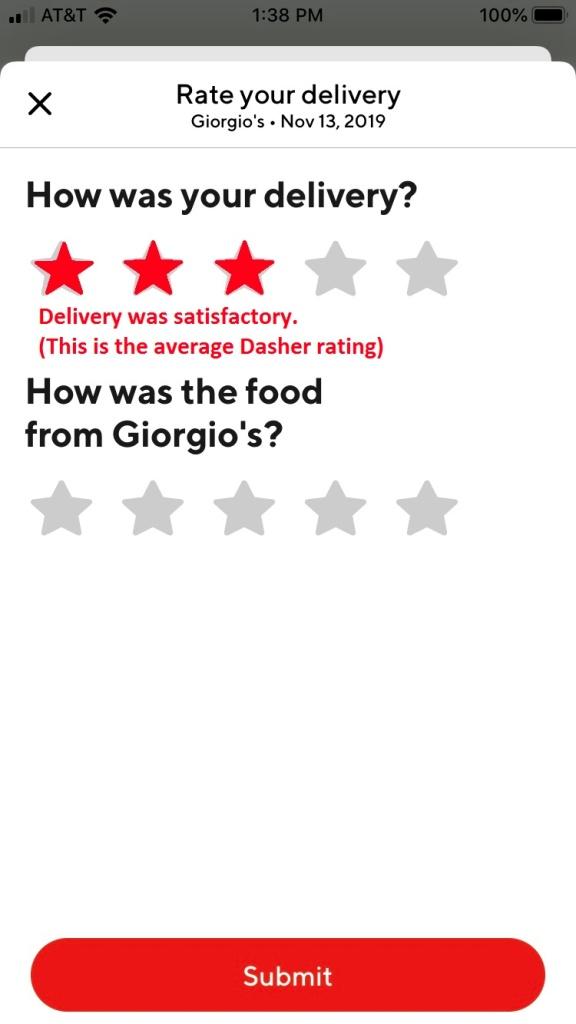
Any ratings of 1, 2 (and possibly 5), needs an explanation of at least 50 characters before submission. This requirement will cut down on false accusations, or at least force the customer think of a plausible story. This idea was inspired by this Lyft policy.
Dashers receive access to feedback (anonymously) after a certain period of time. DD would need some kind of control to filter out inappropriate comments.
Dashers face deactivation at a 2.75 rating.
I also think Dashers would find greater motivation to raise their ratings from, say 3.5 to 4.5 vs. 4.4 to 4.7. Do you know how many consecutive 5-star ratings you need to increase your score from 4.4 – 4.7? The perfection required is disheartening, like the Ziosk stories.
To be honest, maintaining a 4.2 average rating is not difficult. Any knucklehead can exert a modest amount of effort and soar above the Dasher minimum. But the current system misses an opportunity to provide more accurate scores for corporate, and feedback for Dashers who want to improve their service.
BONUS TOPIC! Dasher Order Ratings
This takes me to one of my pet peeves. On the Dasher side, we have the opportunity to rate our delivery experiences. At the end of every order, we’re asked (not required) to list our delivery as either a smiley face or frowny face, with a number of different specifics that we can check. Here’s what it looks like:
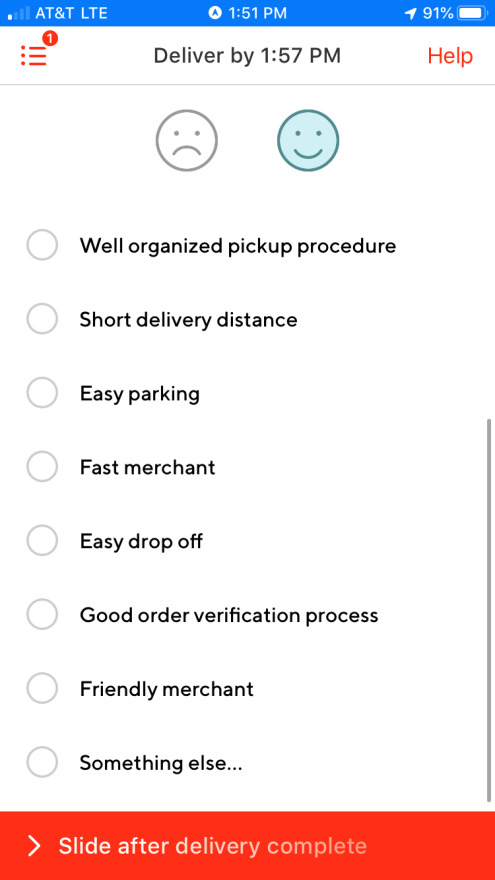
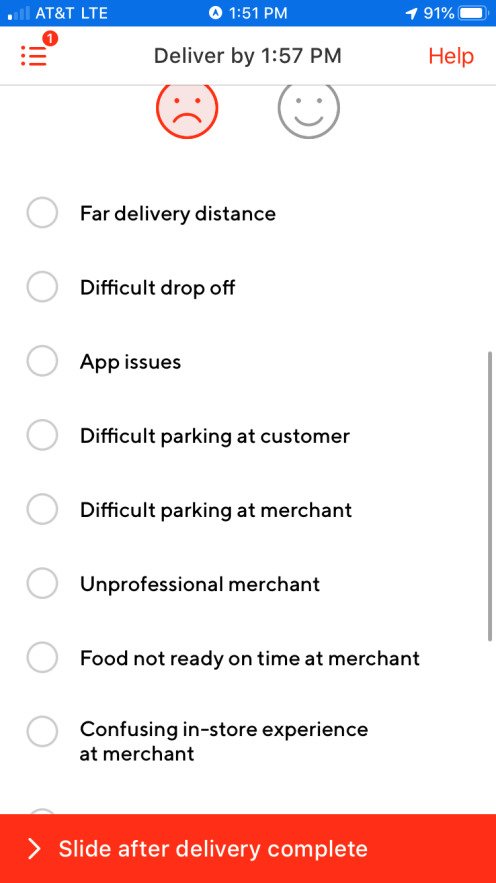
I strongly dislike that I have to declare an order as good or bad before specifying the reasons. Aspects of an order can have both good and bad qualities. I’ll get orders where parking is terrible and the food is slow, but the cashier was apologetic and the delivery was easy. Is that a good or bad order? DoorDash corporate, if you’re reading, I’d like you to place the topics in the middle and have options for good/bad on either side. Stretching the limits of my MS Paint skills, here’s an example:
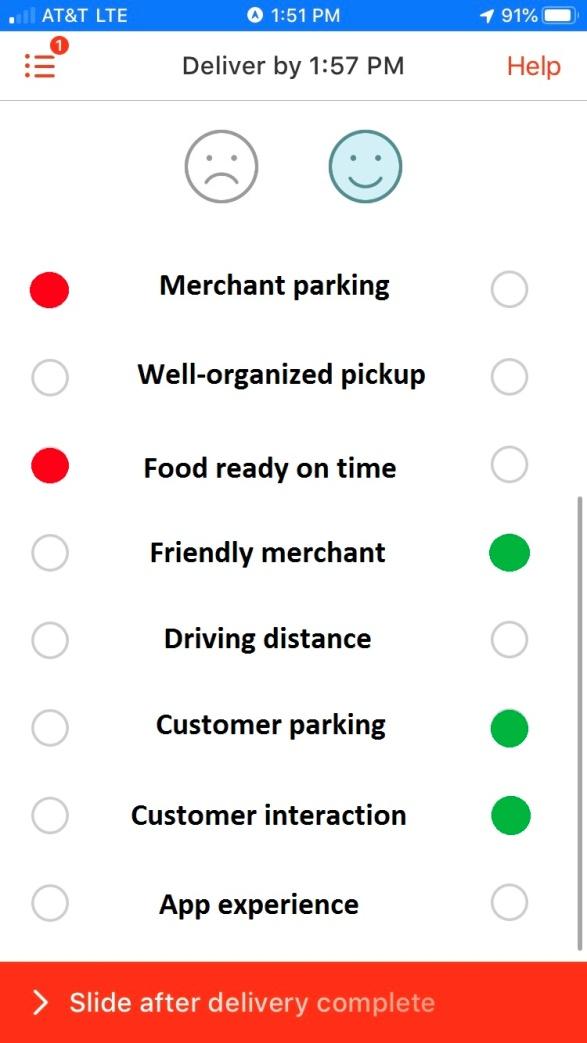
Doesn’t this make sense? This format allows Dashers to provide a far more accurate portrayal of their experience.
Drive safely, everyone!
Ready to sign up for DoorDash? Get started using our DoorDash sign up link here.
Dashers and other delivery drivers, do you agree with Dash that ratings could be better, or do you like them the way they are now? If ratings did take people longer, do you think people would just not rate at all?
-Dash @ RSG
Related articles:
Doordash driver pay
Doordash tips and tricks
Doordash orientation
Is doordash worth it
Doordash sign-up bonus
